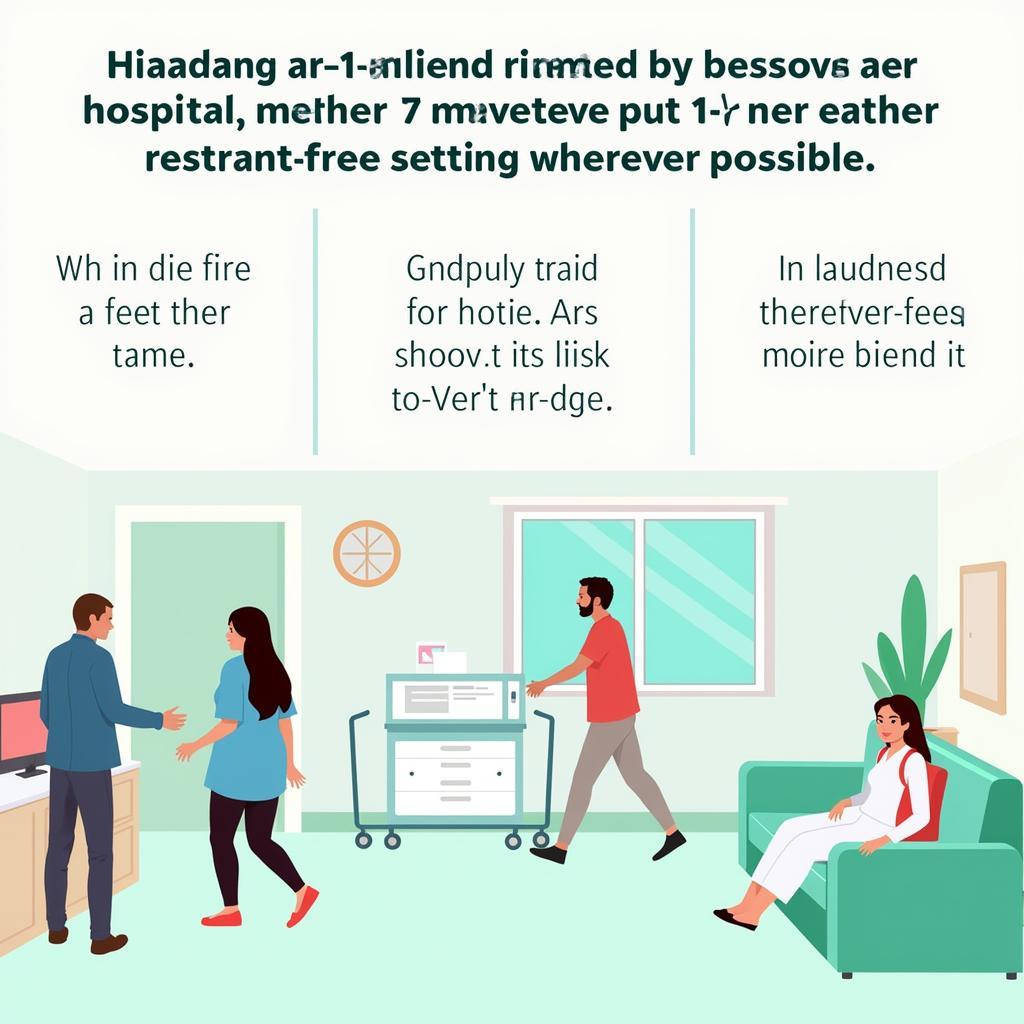The use of restraints in a healthcare setting is a complex issue that requires careful consideration and strict adherence to hospital policy. At San Jose Hospital, our commitment to patient safety and well-being is paramount. We understand that restraints, while sometimes necessary, should always be a last resort and used only when absolutely essential for the safety of the patient, staff, or others.
 Patient Restraints Hospital Policy
Patient Restraints Hospital Policy
What are Restraints?
Restraints are any manual method, physical or mechanical device, material, or equipment that restricts a patient’s freedom of movement or normal access to their body. This can include:
- Physical restraints: Holding a patient down or using physical force to restrict their movement.
- Mechanical restraints: Using devices like wrist or ankle straps, belts, or vests to limit movement.
- Chemical restraints: Administering medication to sedate a patient and control their behavior.
When Can Restraints Be Used?
San Jose Hospital’s policy on restraints strictly adheres to ethical and legal guidelines. Restraints are only permissible when:
- All other less restrictive interventions have been attempted and documented as ineffective. This may include verbal de-escalation techniques, offering reassurance and support, modifying the environment, or involving family members.
- The patient’s behavior poses an immediate and serious danger to themselves or others. This could include situations where a patient is attempting to remove essential medical equipment, physically harming themselves or others, or exhibiting extreme agitation that cannot be managed through other means.
 Restraint-Free Environment Hospital
Restraint-Free Environment Hospital
What is the Procedure for Applying Restraints?
The decision to apply restraints is not taken lightly and requires a specific protocol:
- Assessment: A qualified healthcare professional conducts a thorough assessment of the patient’s physical and mental state, identifying the need for restraints and documenting the specific behaviors that warrant their use.
- Physician’s Order: Restraints can only be applied with a written order from a physician, clearly stating the type of restraint, the rationale for their use, and the duration.
- Informed Consent: Whenever possible, informed consent should be obtained from the patient or their legal guardian.
- Application: Restraints must be applied safely and correctly by trained staff, following established procedures to minimize discomfort and prevent injury.
- Monitoring: Patients in restraints require continuous monitoring of their physical and mental well-being, including vital signs, circulation, skin integrity, and comfort.
- Reassessment: The need for restraints is reassessed regularly, and they are removed as soon as the patient’s condition allows, transitioning to less restrictive measures whenever possible.
Our Commitment to Restraint Minimization
At San Jose Hospital, we are dedicated to minimizing the use of restraints and promoting a culture of safety and respect. We achieve this through:
- Ongoing staff education and training on restraint prevention techniques, de-escalation strategies, and alternative approaches to managing challenging behaviors.
- Collaboration with patients and families to develop individualized care plans that address their unique needs and promote a sense of control and dignity.
- Continuous quality improvement efforts to monitor and evaluate our restraint practices, identifying areas for improvement and implementing evidence-based best practices.
Conclusion
San Jose Hospital’s policy on restraints prioritizes the safety and well-being of our patients while upholding their dignity and rights. By adhering to strict guidelines, promoting restraint minimization strategies, and fostering a culture of compassion and respect, we strive to create a healing environment where every patient feels safe, supported, and respected. For more information about our policies and procedures, please visit our website or contact us directly.
FAQs about Hospital Restraint Policies:
- What are the potential risks associated with using restraints?
Restraints can lead to physical injuries, such as pressure sores, bruising, or even strangulation. They can also cause psychological harm, including anxiety, fear, and feelings of humiliation.
- How often are patients in restraints monitored?
Patients in restraints require constant monitoring, with frequent checks on their physical comfort, vital signs, and overall well-being. The frequency of these checks depends on the type of restraint used and the patient’s individual needs.
- What are some alternatives to using restraints?
Hospitals are increasingly adopting restraint-free approaches, which involve using less restrictive methods to manage challenging behaviors. These may include:
* Verbal de-escalation techniques
* Sensory modulation interventions
* Therapeutic activities
* Environmental modifications
* Involvement of family members- Can families refuse the use of restraints on their loved ones?
Families have the right to be involved in decisions regarding their loved one’s care, including the use of restraints. However, in emergency situations where a patient poses an immediate danger to themselves or others, the hospital may need to prioritize immediate safety.
- What is San Jose Hospital doing to reduce the use of restraints?
San Jose Hospital is committed to minimizing the use of restraints through staff education, patient-centered care plans, and continuous quality improvement efforts. We strive to create a therapeutic environment that prioritizes patient safety and dignity.
For immediate assistance or to discuss your concerns, please contact us at 02437655121 or email us at [email protected]. You can also visit us at our location: Số 298 Đ. Cầu Diễn, Minh Khai, Bắc Từ Liêm, Hà Nội, Việt Nam. Our dedicated team is available 24/7 to address your needs.